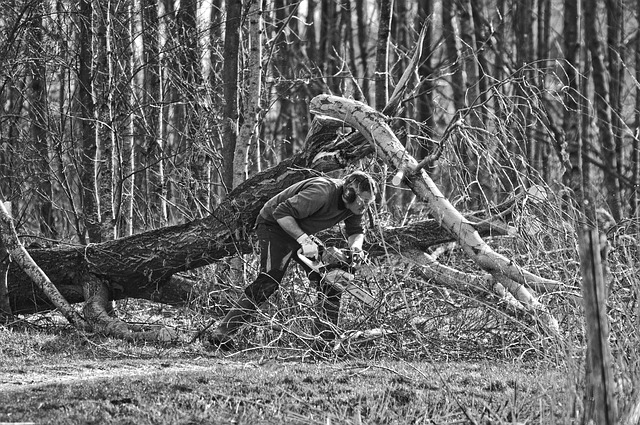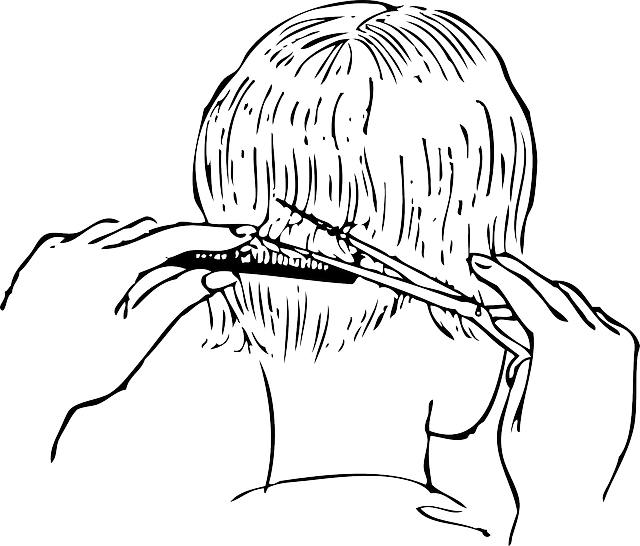Tree health inspections are vital for maintaining vibrant landscapes in Highlands Ranch, focusing on structural integrity, leaf health, bark condition, root development, and pest/disease signs. Conducted during late winter or early spring—the best time to prune fruit trees—they allow for informed decisions, reduce tree stress, and enhance aesthetics. Regular monitoring ensures safety by mitigating storm risks and promoting biodiversity. The optimal pruning time is between late winter and early spring, with proper techniques including removing dead branches, thinning crowded areas, and clean cuts outside the branch collar. Balanced fertilizers and pest/disease monitoring support robust growth and fruit yield while preserving tree health.
Tree health inspections are vital for maintaining vibrant landscapes. Understanding these assessments allows property owners and professionals alike to implement effective care strategies, ensuring tree longevity and optimal growth. This article explores two key aspects: ‘Understanding Tree Health Inspections’ delves into benefits and critical indicators, while ‘Timing Pruning for Fruit Trees in Highlands Ranch’ provides a practical step-by-step guide. Additionally, we uncover common tree care practices to enhance productivity and foster robust ecosystems. For those seeking the best time to prune fruit trees in Highlands Ranch, this resource offers invaluable insights.
- Understanding Tree Health Inspections: Benefits and Key Indicators
- Timing Pruning for Fruit Trees in Highlands Ranch: A Step-by-Step Guide
- Common Tree Care Practices to Enhance Longevity and Productivity
Understanding Tree Health Inspections: Benefits and Key Indicators

Understanding Tree Health Inspections: Benefits and Key Indicators
Tree health inspections are essential for maintaining vibrant landscapes, especially in areas like Highlands Ranch where proper care ensures the longevity of both urban and natural settings. These inspections involve a thorough evaluation of a tree’s overall condition, focusing on key indicators such as structural integrity, leaf and bark health, root system development, and signs of pests or diseases. Conducting these assessments at the best time to prune fruit trees—typically during late winter or early spring when they are dormant—allows arborists to make informed decisions while minimizing stress to the tree.
By identifying issues early, inspections enable proactive measures like targeted pruning, fertilization, or pest management. This not only enhances aesthetic appeal but also strengthens the tree’s resistance to environmental challenges. Regular tree health monitoring pays dividends in safety, as weak branches can pose a risk during storms, and it promotes biodiversity by fostering healthier ecosystems that support various plant and animal species.
Timing Pruning for Fruit Trees in Highlands Ranch: A Step-by-Step Guide

In Highlands Ranch, timing pruning for fruit trees is crucial for ensuring optimal health and maximum fruit production. The best time to prune generally falls between late winter and early spring, just before new growth begins. This period minimizes stress on the tree and allows it to heal quickly from any cuts made during pruning. For fruit trees, such as apples, pears, or cherries, avoid pruning in late fall as this can expose wounds to cold temperatures, increasing the risk of disease.
Follow a step-by-step guide for effective pruning: first, gather the necessary tools including sharp pruners, saws, and protective gear. Next, assess the tree for dead, diseased, or damaged branches, removing them completely at their base. Then, identify and thin out crowded branches to improve air circulation and light penetration. Finally, make clean cuts just outside the branch collar (the swollen area where the branch meets the trunk) to promote healing. Remember, proper pruning is an art, so consider seeking advice from local arborists if you’re unsure about any specific tree’s needs.
Common Tree Care Practices to Enhance Longevity and Productivity

Regular tree care practices are essential for maintaining optimal health and promoting longevity among fruit trees in Highlands Ranch, Colorado. One of the most crucial aspects is seasonal pruning, especially during the dormant season when trees are less active. The best time to prune fruit trees is typically late winter or early spring before new growth begins. This timing allows for the removal of any dead or diseased branches while also shaping the tree to improve sunlight penetration and air circulation, which enhances overall productivity.
Additionally, proper fertilization is vital for sustained growth. Applying balanced fertilizers at the appropriate times during the growing season can provide essential nutrients that support robust development and increased fruit yield. Regular monitoring for pest and disease issues is another key practice, as early detection enables prompt treatment, preventing widespread damage to the tree’s health and fruit quality.
Tree health inspections are a vital part of responsible tree care, providing insights into the overall well-being of your trees. By understanding key indicators and implementing best practices like timely pruning—especially for fruit trees in Highlands Ranch during their optimal cutting window—you can ensure their longevity and boost productivity. Regular care enhances the beauty and safety of your landscape while fostering a healthier environment.
